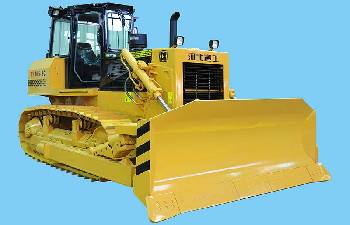Bulldozers are strong machines that mainly assist with pushing, digging, excavating, and leveling materials like soil and debris at a work site. They come with large, heavy blades in the front that push material. Some come with other modifications like rippers in the rear to help break down tough ground.
There are many different Bulldozer types to choose from depending on your specific project. The type of terrain you’re working on, your project type, and other criteria are key factors to consider when selecting a bulldozer. The right machine is also crucial for both the efficiency and safety of your project.
We’ll break down the main bulldozer types and highlight each dozer’s key features.
A crawler is sometimes referred to as a track bulldozer and looks most similar to a tractor. This heavyweight is great for moving heavy materials from one area to another. This bulldozer is ideal for traversing dense and irregular terrain since the tracks give it great traction. Larger crawlers have rippers that assist with crushing and clearing dense terrain.
This machine is sometimes referred to as a tire bulldozer and is normally larger than a crawler. A wheel dozer is more maneuverable than a crawler since its tires offer better overall handling. It also has completely articulated hydraulic steering and moves on a smaller axis. This machine is also ideal to use for soft or sensitive ground since the tires are gentler than tracks.
This smaller bulldozer is also known as a compact bulldozer. A mini dozer is great for projects that require more maneuverability and versatility than larger machinery. Thanks to its small size, a compact bulldozer can perform well in different types of projects that require tasks like grading and clearing lots.

TY165-3 bulldozer
Purchasing or renting a bulldozer for your project can improve the efficiency of your project if the right one is selected. Here are a few things to keep in mind when reviewing bulldozer types for your next project:
1.Identify its purpose. Are you leveling earth? Pushing material?
2.Analyze the work site. Do you need to maneuver in tight spaces?
3.Consider the terrain. Are you working on a hard or soft surface?
4.Pinpoint material types. What type of earth are you moving? What’s its density?
There are several bulldozer types that can fulfill most of your hauling, pushing, and leveling needs. Taking the time to weigh your options and familiarize yourself with each unique feature of the dozer will greatly benefit your job site.If necessary, please contact the Bulldozer Supplier
Previous: Welcome to Shengmao Machinery
Next: Diagnostic Method For Insufficient Hydraulic Pressure And No Pressure Failure
Copyright:@2020-2021
Comments Please sign in or sign up to post.
0
0 of 500 characters used